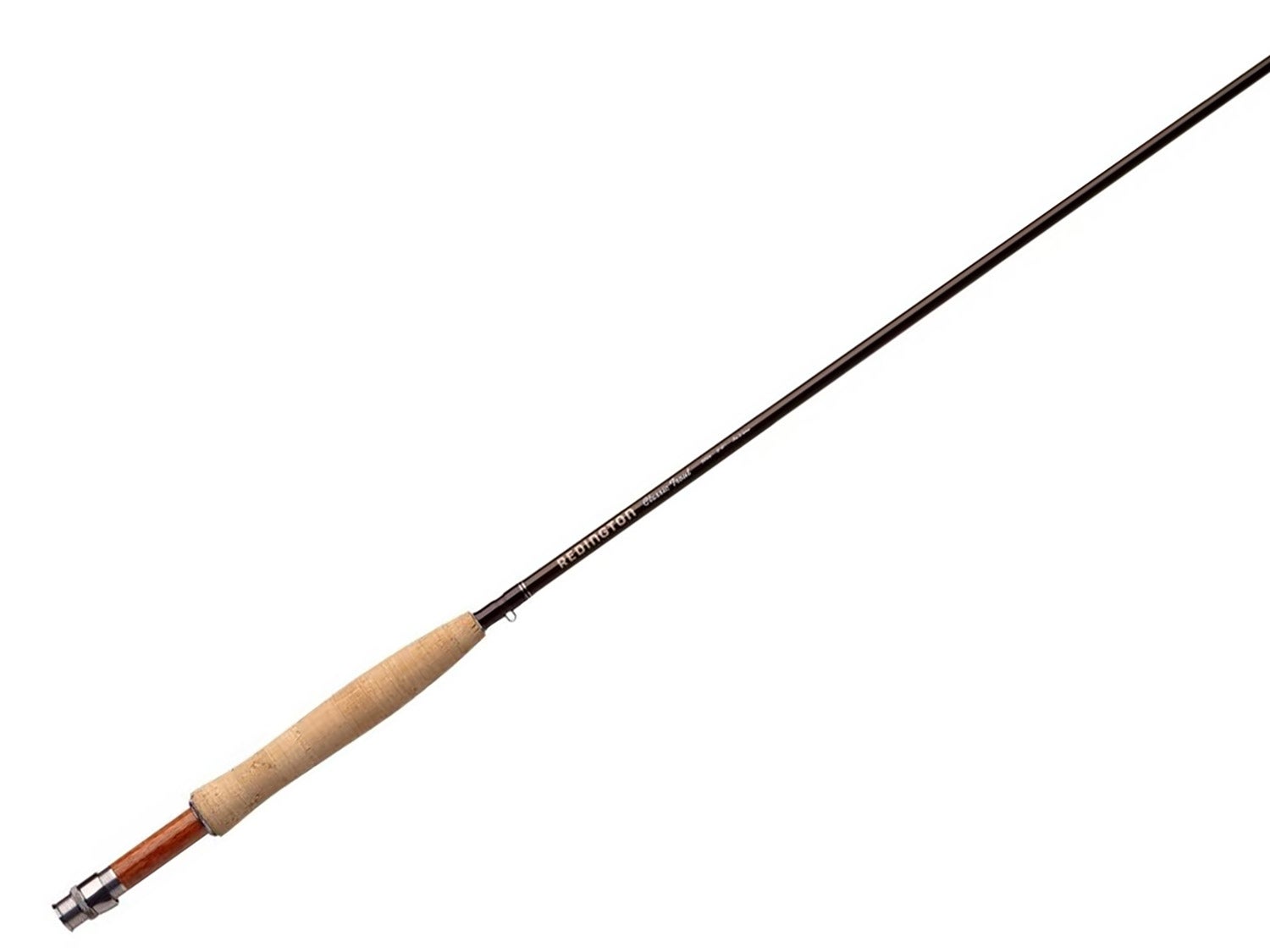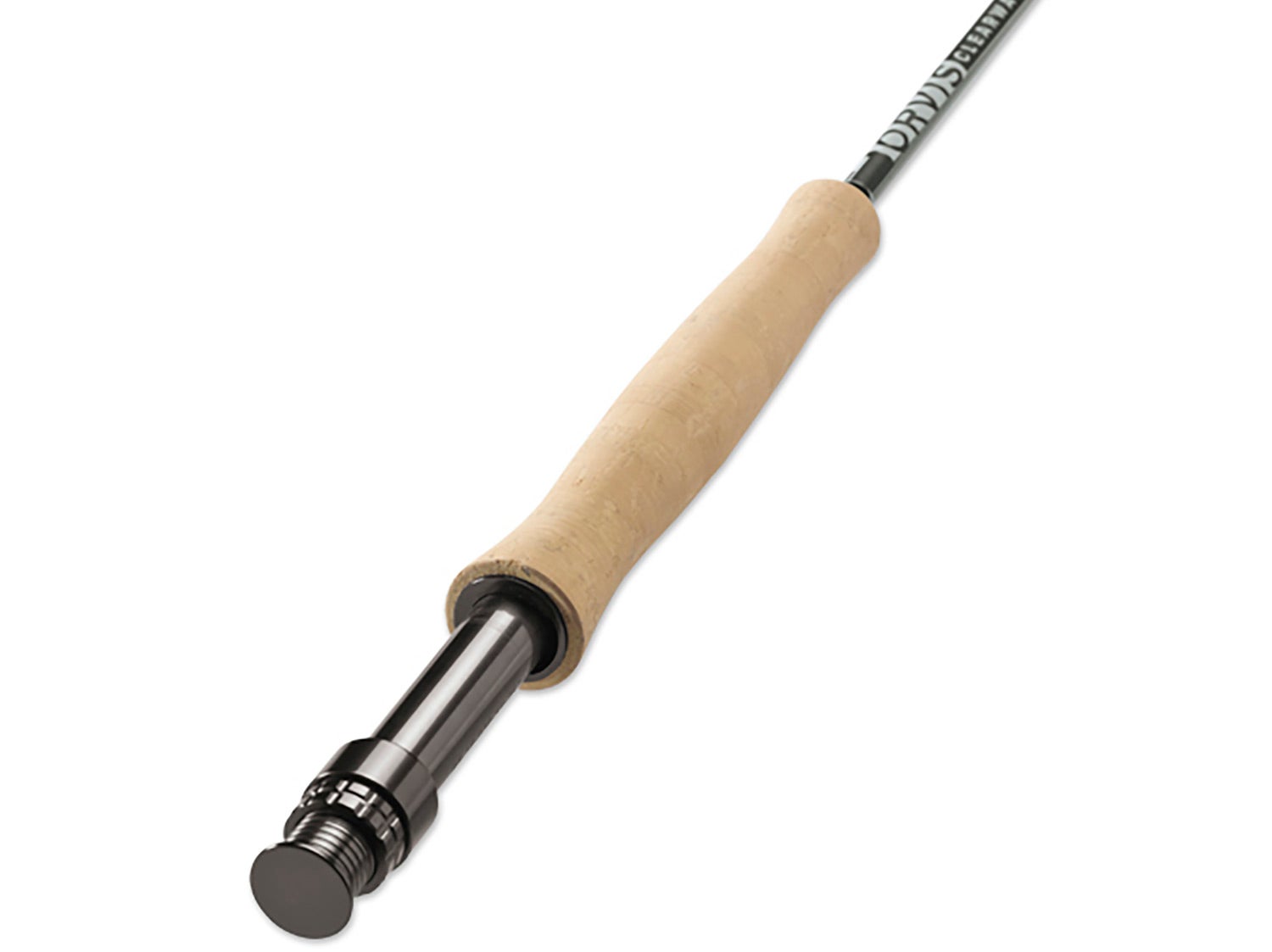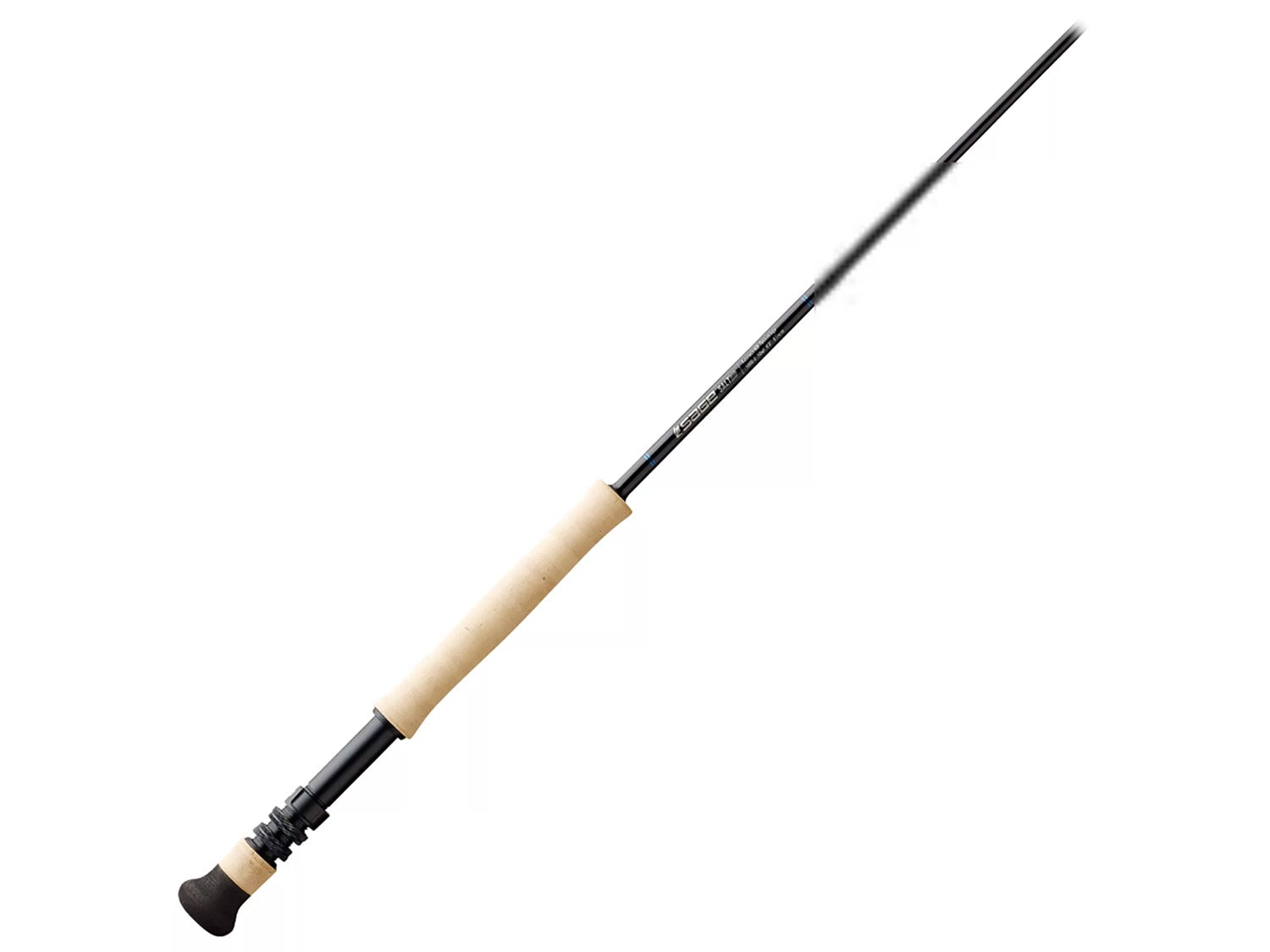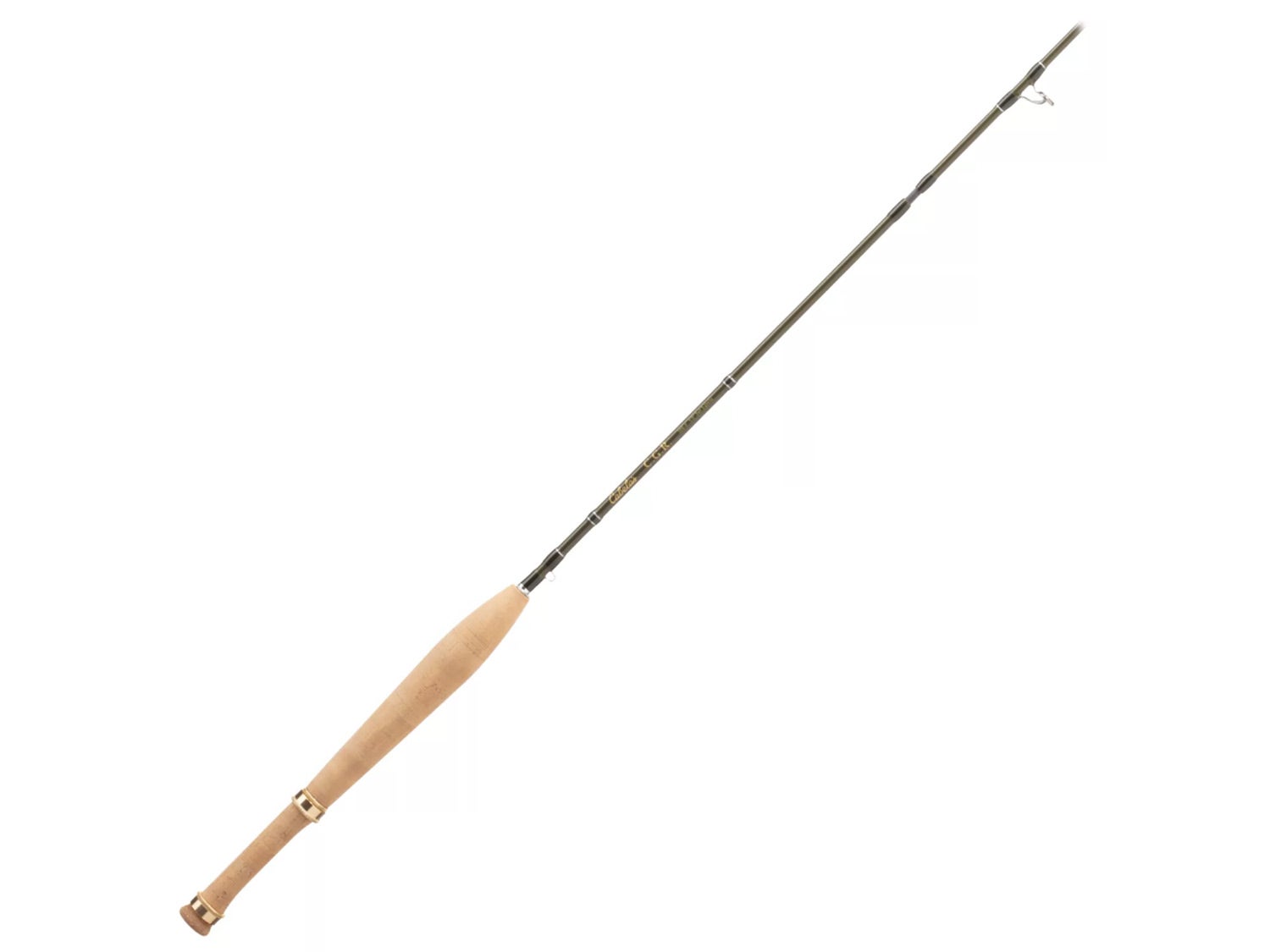Yes, there’s a bit of art to fly fishing, but casting a fly rod isn’t like painting Mona Lisa. This is a skill that you can learn. You’ll get better faster, and achieve a higher level of success, if you’re using the right tool for the job. To make the right choice, you’ll need to learn some of the terms and technologies that go into fly rod design and manufacture. But after you find the perfect fly rod, it’s all fun and games–on the water, with a fish on the line.
Match your fly rod choice with your fishing style, and you’ll never have to tell another story about “the one that got away.”
A great fly fishing rod is a tool that not only helps you cover plenty of water, but also covers the distance to your fly fishing dreams. That’s one of the wonderful things about the pursuit of fly fishing. It’s a skill that you can develop during your entire lifetime, and the more you fly fish, the more you’ll want to experience wilder places where fish live–whether that’s a once-in-a-lifetime tropical trip, or simply travel to another region in your home state to catch a different species of fish.
The best fly rod isn’t necessarily the most expensive one. You’ll have to match the rod to your fishing style and ability, and then add just a bit of quality to enable you to get even better. And the good news is that there are so many great fly rods out there, designed for nearby waters or for the traveling angler, that you’ll be able to find one that suits your budget and your aspirations. So don’t get frustrated with fancy terminology and complex engineering. Here’s a straightforward guide to what to look for in a new fly rod, whether you’re a first-time angler or ready to head for distant water.
Best Fly Rod for Beginners: Temple Fork Outfitters Axiom II X
Best Fly Rod For Kids: Redington Classic Trout
Best Travel Fly Rod: Orvis Clearwater Travel Fly Rod
Best Saltwater Fly Rod: Sage Salt HD Fly Rod
Best Cheap Fly Rod: Cabela’s CGR Fiberglass Fly Rod
Are You Shopping for Your First Fly Rod?
Fly rod choice can be a little complicated, but there are some basic ways to dial in on the right one. Fly rods are sized by “weight,” which relates to the size of the fly line the rod is designed to cast. Rods come from in line weights from 0-weight to 15-weight, and in general, the smaller the line weight, the smaller the fish typically targeted by the angler. A good start for stream trout and panfish would be a 4- or 5-weight rod. If you’re interested in fishing for bass and other medium-sized fish, a 7- or 8-weight rod is required to cast larger and heavier flies. Inshore saltwater fishing—striped bass, bluefish, redfish—calls for 9-weight rods. Thinking of going offshore and tackling marlin on the fly? You’d better push it to a 15-weight fly rod.
Fly rod weight is also a function of your fishing style. Experienced anglers often opt for lighter rods to make it more fun when landing fish, but you’ll need a solid skillset to tangle with trout on a 2-weight rod, for example. And the heavier rods tend to be stiffer. If you plan on casting a 9-weight rod or larger, you’ll probably do better with a bit of casting experience so you have the mechanics to deal with long heavy lines overhead.
And avoid gimmicky fly rods, such as a collapsible fishing rod. Chances are good that fly fishing might become your next passion, so don’t start out with a rod that can’t give you a great first experience.
Best fly rod for beginners: Temple Fork Outfitters Axiom II X
Beginner to Expert
For beginners, you’ll want a quality rod that helps you learn how to cast, with enough technology so you can grow your skills without buying a new rod. Temple Fork Outfitters
BUY NOW
If you’re just starting out, there’s a good chance you’ll get hooked on fly fishing. Start with a quality rod that lets you feel the line “load,” but with enough spine to help you learn how to make longer casts. The Axiom II X covers the distance between the shorter casts beginners need to master, and the longer bomb-it-out-there casts you’ll want to handle.
Do you want to buy a fly rod for a kid?
Fly rods are long! There’s no way around it–a rod needs to be pretty long to handle a fly line. And while the temptation exists for beginners to think they need the shortest rod they can find, that’s not necessarily true. Most standard fly rods are 9 feet long, which enables the rods to bend as the fly line straightens out behind the caster, then straighten out the flex to deliver the power to cast the line forward. A shorter rod changes that dynamic—it won’t provide enough power.
But fly rod length also has a lot to do with how a rod performs on the water. If you’re fishing a stream or creek with moving water, lots of rocks and gravel bars, and different currents flowing at different speeds, a longer fly rod allows you to reach out so you can control the amount of line between the rod tip and the water–a definite benefit so your fly will drift easily and lifelike in the current.
Shorter rods can be great for kids just learning how to fly fish. And for trout anglers headed to tiny creeks where lots of vegetation can tangle lines and flies, a shorter rod can be a benefit. But for the vast majority of anglers, a 9-foot rod is the way to go.
Best fly rod for kids: Redington Classic Trout

Perfect Fit
Short enough to easily handle, and light enough to make even small fish fun, this quality rod will last for years. Redington
BUY NOW
A shorter rod such as a 7-foot 6-inch rod will help kids handle fly line zipping through the air overhead, but you still can’t scrimp on quality. It’s critical for younger anglers to feel the rod load in order to make an accurate cast, so a classic build such as this Redington trout rod is perfect for bluegill, bass, and other common fish species.
Will you be traveling with the fly rod?
Another decision point for a fly rod purchase is how many separate pieces make up the rod. While one-piece rods are available, it’s more common to see 2-piece, 3-piece, and 4-piece rods. And rods made of even more pieces are built for traveling anglers that want a short rod case they can stuff into suitcases and even briefcases.
It’s no surprise that there’s a bit of give and take when it comes to fly rod lengths. The more pieces in a rod, the more joints there are to fail. And all of those joints—called ferrules—add weight, and can ever-so-slightly affect a rod’s critical bending characteristics.
For most purposes, a 4-piece rod is a great all-around choice. It’s short enough to break down for easy transport, but without too many components that can start to affect performance. If you plan on traveling a lot with your fly rod, a travel fishing rod that breaks down into six or more pieces is a good idea. But don’t save too many pennies. Go for a high-quality travel fly rod. You’ll be better off with top-shelf components and build quality in a travel rod that will last.
Best travel fly rod: Orvis Clearwater Travel Fly Rod

Packable Power
Small enough to fit in a briefcase, this time-tested Orvis rod still packs the punch to fight big fish. Orvis
BUY NOW
Travel fly rods that break down into 5 or 6 pieces need careful design and construction. You’ll want solid wraps to protect all the ferrules required of a highly portable fishing rod, and high-quality blanks that will turn an ultralight fishing rod into a serious contender on the water. In 5-, 6-, and 8-weight builds, the Orvis Clearwater Travel series covers a huge range of fishing conditions.
Will you need to make long casts?
A rod’s action relates to how stiff the rod’s components are designed to be. You can have two rods in the same weight that feel very different—one might seem super stiff, and the other a bit wiggly. A fast-action rod is built a bit more stiffly, so it flexes less, and that increased backbone gives it the power to drive a fly line long distances. A fly rod with a slower action—might not have the ability to deliver an 80-foot cast with ease, but it could excel at quick, short, highly accurate casts. Neither is better than the other, although a slower rod can be easier to learn with.
It comes down to how you plan to use the rod. If you’re typically fishing smaller streams, for closer targets, and smaller fish, a slower rod might help with your accuracy. But if you need to reach out and touch fish at 50 feet or greater, which is typical when fishing saltwater—or are using sinking lines or heavy flies anywhere—a rod with a faster action has the power you need. That fast action is also helpful for casting into the wind.
Best Saltwater Fly Rod: Sage Salt HD Fly Rod

Top-of-the-line Performance
Tough enough to handle a 120-pound tarpon, this fast-action fly rod is made from tip to butt to excel in difficult saltwater conditions. Sage
BUY NOW
If you’re headed for big-fish water—or just want to show up with the best fly fishing equipment possible—a fast-action graphite rod like the Sage Salt is the tool of choice. The rod is designed to throw tight loops to help you cast into the wind, and deliver the fly very accurately to finicky fish. And the oversized guides cut down on friction to add critical distance to your cast.
Budget fly rods: What you get for under $70
When it comes to fly rod materials, there are three basic choices–bamboo, fiberglass, and graphite. They all have very different characteristics, and can have very different price points. Let’s start with bamboo first, since it was the original material for fly rods.
A bamboo fly rod isn’t made of a single stem of bamboo, like a cane fishing pole. Instead, each fly rod is built of long strips of carefully chosen and cured bamboo, meticulously matched and painstakingly glued together. That’s why modern bamboo fly rods can be so expensive. But there’s no denying their natural beauty. And aficionados love the soft, buttery-smooth feel of casting a classic bamboo fly rod. But they are definitely not a great beginner’s choice. And they’re typically used when fishing for trout-sized fish.
Fiberglass fly rods were next on the scene, and when they arrived, they were greeted as the high-tech game changers they were at the time. There’s a definite retro resurgence to fiberglass fly rods. While they can be heavier than modern graphite rods, they retain that slower feel, with sensitive tips that allow anglers to deliver pinpoint casts to fish at close to moderate ranges. Sound like your kind of fishing? That’s good, because there are tons of newer fiberglass rods made for this kind of fishing.
The most modern fly rod material is graphite. These rods are tougher than bamboo fly rods, typically lighter than fiberglass rods, and can be built in a variety of ways that alter their casting characteristics. High-modulus graphite rods use materials that are stiffer by weight than lower-modulus graphite rods. That allows rod builders to design graphite rods that are thinner and lighter for high degrees of sensitivity and longer casts.
The upshot: The choice is yours, as long as you know the differences in all those fly rod materials. But if you’re on a budget, a good fiberglass fly rod is a great choice.
Best Cheap Fly Rod: Cabela’s CGR Fiberglass Fly Rod

Great Sensitivity
A great all-around rod for freshwater fishing. Cabela’s
BUY NOW
In a world of high-tech, super-fast graphite fly rods, a fiberglass rod might seem like a throwback. But this affordable rod has a superior feel, and it’s built with high-quality components for years of use. It’s a great travel rod, too, since it’s lightweight and packable.
Best Fly Rod FAQ: People Also Ask
What is the best all-around fly rod weight?
The best all-around fly rod weight depends on what you’re fishing for. You can’t go after a 10-inch trout with the same rod you’d use to tackle a 100-pound tarpon. But for general angling for trout, panfish, and bass, it’d be hard to beat a 6-weight fly rod. It’s strong enough to tame fish in moving water, but not so heavy that you’d feel like you’re catching smaller fish on a broomstick. If you’re just going to fish farm ponds and smaller streams, step down to a 5-weight rod.
How much should I spend on a fly rod?
When thinking about how much you should spend on a fly rod, ask yourself how serious you plan to be on fly fishing. There are good rods for less than $100 (see above)–although you’d be hard-pressed to find rods tough enough to tame big, strong fish for that. But so much about fly fishing is about enjoying the skills required to cast, so don’t (literally) sell yourself short. If you’re already an avid fly angler, or think this is something you want to really enjoy, but a rod you can grow into. That doesn’t necessarily mean dropping $900 on a fly rod. But if you’re a good enough caster, an expensive fly rod can definitely make you better.
What is the best fly rod for a beginner?
A beginner’s fly rod isn’t the same thing as the cheapest fly rod you can find. Like any other pursuit based on skill, a thoughtfully designed and well-built fly rod will make it easier for you to grow with the sport. So don’t look for a cheap rod just to see if you’ll like fly fishing. Invest in quality fly fishing gear that isn’t uncomfortable for your budget, but that will allow you to experience the joy of casting. And see our recommendation above.
A Final Word on Choosing the Best Fly Rod
Dialing in on the best fly rod can be a super-fun process. If you’re new to the sport, you’ll want to be honest about your general fishing ability, where you have easy access to fish so you’ll have plenty of time to use your new toy, and what kind of fish you’ll target. And if you’re an experienced angler, a new fly rod is all about aspiration: Just how good do you want to get at fly fishing? And what kind of new worlds–down the street or around the globe—do you want to explore? A great fly rod helps you experience new adventures, no matter the price tag.
Credit: Source link































